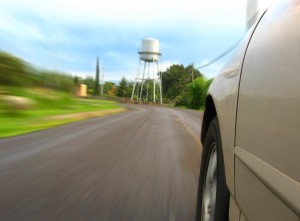Somehow, my older daughter has already turned 16 and I am teaching her to drive. We are working through the basics of how to control the car: staying centered in the lane, managing speed through turns, interpreting various traffic signs, etc. She is getting there, and I am confident she will master all of that soon enough.
But the larger lessons are about how to think while she is driving, her habits of mind behind the wheel. So far we have three primary rules of the road that we come back to every time we are in the car:
Visibility and road conditions determine speed. While road conditions are an obvious concern, VISIBILITY has been a key point of emphasis on our practice drives. I want my daughter to know that the laws of physics aren’t impressed with ‘right of way,’ and I want her to develop a default reaction of easing up when approaching blind hills and curves. She needs to understand that it is impossible to know whether someone–or something–might be in the road ahead, so when visibility is short it is wise to let off the gas and be prepared to brake until her sightlines are clear.
Don’t take for granted that anyone else is going to do what they should. Despite the fact that the vast majority of people seem to characterize themselves as pretty good drivers, my own experience has made me what we might call skeptical. So I want my daughter to adopt a ‘universal precautions’ approach behind the wheel.
We routinely talk about what another car might have done–jumping into traffic, running a light, etc.–and how she would have reacted to keep herself safe. I have often found myself quoting my own dad, who taught me driving wisdom such as “the only thing a blinking turn signal tells you for sure is that it works.” Much of our philosophy boils down to the words of President Reagan: “Trust, but verify.”
Distractions are a driver’s greatest enemy. Consider:
- A recent article in the Washington Post cites a study indicating that beyond teen drivers being the age group most likely to have a FATAL accident, the probability increases by 50% with one teen passenger, by a full 100% with two teen passengers, and by 300% with three or more teen passengers.
- A study by the Highway Loss Data Institute, cited in a CNET article, explains that drivers are no less likely to have accidents using hands-free phones than using handheld models.
- Personally, I have had one accident that was my fault. When I was a college student, I looked down to change the radio station as the driver in front of me locked his breaks, and I could not quite stop in time–’nuff said.
So limiting distractions will be a high priority–and something of a challenge given the lifestyles of teenagers and the prevalence of electronic communication.
Once my daughter is driving solo, she will have to stay solo for a while, avoiding the temptation and the peer pressure to take one of her friends with her–until she builds up experience & expertise–and we will talk about strategies for safe cell phone use. Fortunately, she is earning her license in a different era than I did, as new drivers in our state are required to have their learner’s permits for almost a year and they must log a minimum number of hours before even applying for the actual license. Over the last 30 years, the state has become more cautious and purposeful in licensing drivers….which matches perfectly with our plan for all three of our kids.








